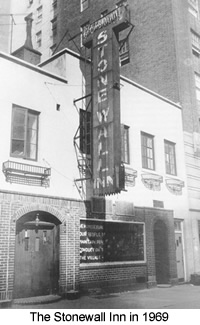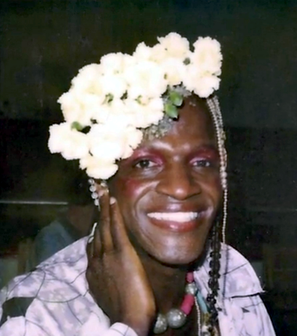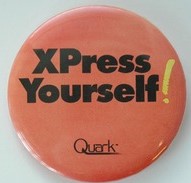
With each passing year, the place of June as LGBTQ+ Pride Month seems to gain greater recognition and wider celebration. This year, I was delighted to talk to my 76-year-old aunt about her experience marching for the first time in a Pride parade—from Lambertville, New Jersey, across a bridge into New Hope, Pennsylvania—as part of an outreach by her church to the LGBTQ+ community. It made me recall how moving it was to march in Pride in Northampton, Massachusetts, with my children and their elementary school community, now too many years ago. With the growing recognition of Pride, including by many corporations that simultaneously fund actively anti-LGBTQ+ politicians and political groups, the historian in me feels that it is important to recall why it is that Pride Month is celebrated in June.

The Stonewall Inn, Greenwich Village, New York City, 1969. Source: https://commons.wikimedia.org/wiki/File:LgStonewall.jpg
The reason is, of course, historical. It was on June 28, 1969 that a police raid of the Stonewall Inn—a LGBTQ+ bar on Christopher Street in Greenwich Village, New York City—was met with direct and sustained resistance by the community: the Stonewall uprising. Led to a great degree by Black and Brown LGBTQ+ people (who self-identified as queens, drag queens, transvestites, and lesbians), a growing community hampered the arrest of the Inn’s patrons and employees, continuing their protest for LGBTQ+ human and civil rights for days afterward. These direct actions of June 1969 were inspirational for the continued fight for LBGTQ+ rights that has been fought since. Today, the human and civil rights of the transgender community, and in particular transgender youth, are under renewed and severe attack.

One of the only known photographs from the morning of June 28, 1969, as a crowd begins to assemble and confront the police at the start of the Stonewall Uprising. Source: https://en.wikipedia.org/wiki/Stonewall_riots#/media/File:Stonewall_riots.jpg

Marsha P. Johnson, a founding member of the Gay Liberation Front and a prominent figure in the Stonewall uprising. Johnson self-identified as a drag queen and transvestite. Source: https://en.wikipedia.org/wiki/Marsha_P._Johnson
The history and meaning of Stonewall have been particularly important to computer programmer and entrepreneur, Tim Gill. During the Presidency of Barack Obama, Gill worked with the US Department of the Interior to identify important historical landmarks for LGBTQ+ history. In 2016, the US Park Service created the Stonewall National Monument in Christopher Park, across from the Stonewall Inn. Through his Gill Foundation, Tim Gill and his husband, Scott Miller, ensured that the Covid-19 pandemic did not spell the end of the Stonewall Inn, raising significant funds to see it through.

National Park Service signage for the Stonewall National Monument in New York City. Source: https://commons.wikimedia.org/wiki/File:Stonewall_National_Monument.jpg
As detailed in his 2019 oral history interview for the Computer History Museum, Tim Gill was born in 1953, and grew up in Colorado. With an interest in mathematics and science fiction as a youth, it was perhaps not completely surprising that when he first encountered computers during his junior year of high school he was hooked. Gill even enrolled at the Colorado School of Mines and took courses at that time to continue to have access to computers. Back at high school, he helped form a computer club.
Gill went to the University of Colorado, Boulder, from 1972 to 1976, studying computing and mathematics, and also working on programming jobs for local businesses. It was also in the first weeks of his first year at Boulder that Gill began living openly as a gay man. As he explains in his oral history: “That happened within about two weeks of getting to college. I went and visited the Boulder Gay Liberation group, which is what it was called, and I think by my[. . .] freshman, [or] sophomore year, I was their office manager.” It was the beginning of his active involvement in a cause that he champions to this day.
After graduating and trying his hand at working on software at a few established firms, Gill decided to try something of his own. The origins of what would become Quark Incorporated started with his project to create a word processor for a then-new Apple product, the Apple III, a successor to the wildly popular Apple II. The success of the word processor allowed Gill to quickly repay the $2,000 that his parents had loaned him for the effort. Gill’s next step was to evolve his editor so that it could control a professional-quality phototypesetter. This evolution led to the creation of QuarkXPress software, positioned as the typesetting and publishing tool for professional printing and publishing, and quickly in competition with desktop publishing software like Aldus PageMaker in the tremendous expansion of this market. Quark thrived, reaching hundreds of millions in annual sales.

A promotional button for the QuarkXPress publishing software. Source: https://www.computerhistory.org/collections/catalog/102641932
In January 2000, Gill left Quark to devote himself more fully to the work of the Gill Foundation which he had created in the 1990s. The foundation has been one of the leading organizations supporting the fight for LGBTQ+ human and civil rights. As Gill explains in his oral history: “…what you learned, now that I’ve been involved in LGBT rights for a long time, is that people are initially afraid of change, and they’re afraid of people they don’t know and afraid of people they don’t think are like them in some way. And so LGBT people were like that, and so literally it was a matter—so here, what, 14 or something odd years later—well, it’s a little longer than that, but certainly less than 25—we have gay marriage or same-sex marriage, and that entire time was really about having a conversation with the American people and making them think about it and reason about it and get past their initial knee-jerk reaction. And so that really is what the Gill Foundation is about . . . and we have been communicating with the broader American public, and slowly over time we win, because when you can get people to stop and think about it rationally, in the end there’s no real reason to put different people in different boxes.”
Getting to know each other better. Overcoming our fears of difference. Treating everyone equally. Sounds like a great program.
Blogs like these would not be possible without the generous support of people like you who care deeply about decoding technology. Please consider making a donation.